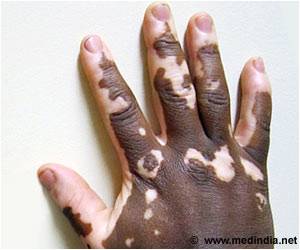Gaining insights into mortality risks among vitiligo patients will enhance patient counseling, healthcare monitoring, and overall patient management strategies.

All-cause and cause-specific mortality among patients with vitiligo
Go to source). Previous studies have documented a reduced risk of cancer in patients with vitiligo, however, there has been limited research on the relationship between vitiligo-associated autoimmunity and the risk of morbidity and mortality among patients with vitiligo.
Vitiligo's Potential Protective Role in Cancer Mortality
Lead investigator Jung Min Bae, MD, PhD, Department of Dermatology, St. Vincent’s Hospital, College of Medicine, The Catholic University of Korea, explains: "As a clinician, one of my goals is to conduct research that can encourage my patients with vitiligo. It was interesting to find that immunotherapy used in cancer treatment often induces autoimmune side-effects like vitiligo. My colleagues and I hypothesized that vitiligo, which is an‘Autoimmunity linked to vitiligo might contribute to a decrease in both morbidity and mortality. #vitiligo #skindisease #whitepatches’





The mortality of patients with vitiligo was investigated in a population-based cohort using the National Health Insurance Service (NHIS) database and the National Death Registry in South Korea. All-cause and cause-specific mortality were compared between patients with vitiligo and controls. In total, 107,424 patients with incident vitiligo and 537,120 matched controls were included. The mortality rates were 34.8 and 45.3 per 10,000 person-years in patients and controls, respectively. In addition to cancer, other cause-specific mortality including infectious diseases, hematologic diseases, endocrine diseases, neurologic diseases, cardiovascular diseases, respiratory diseases, and renal/urogenital disease was lower in patients with vitiligo. According to co-lead investigator Solam Lee, MD, PhD, Department of Dermatology, Yonsei University Wonju College of Medicine: "The strength of our study is the utilization of the large NHIS database, which provides comprehensive information about patient BMI, lifestyles, comorbidities, laboratory findings, and linkage with death certificates. The study employed various statistical methods to reduce the potential bias, which makes the results more robust."
Whether these findings are attributable to the autoimmune mechanism of vitiligo itself or to unexpected effects of vitiligo treatment modalities (e.g., phototherapy) remains to be clarified in future studies.
First author Hyun Jeong Ju, MD, PhD, Department of Dermatology, St. Vincent’s Hospital, College of Medicine, The Catholic University of Korea, adds: "Our findings are significant because they suggest that the autoimmune nature of vitiligo may confer certain protective effects against various causes of mortality, and they offer new avenues for research into the mechanisms underlying this protective effect."
Understanding Vitiligo: Factors Influencing a Chronic Skin Disorder
Vitiligo is a chronic skin disorder characterized by depigmented patches; worldwide prevalence is estimated at 0.5-2% of the general population. Multiple factors contribute to the pathogenesis of vitiligo including susceptibility to oxidative stress, functional abnormalities of melanocytes, adhesion defect between melanocytes and keratinocytes, and autoreactive cytotoxic T cells.Reference:
- All-cause and cause-specific mortality among patients with vitiligo - (https://www.jidonline.org/article/S0022-202X(23)02481-8/fulltext)










